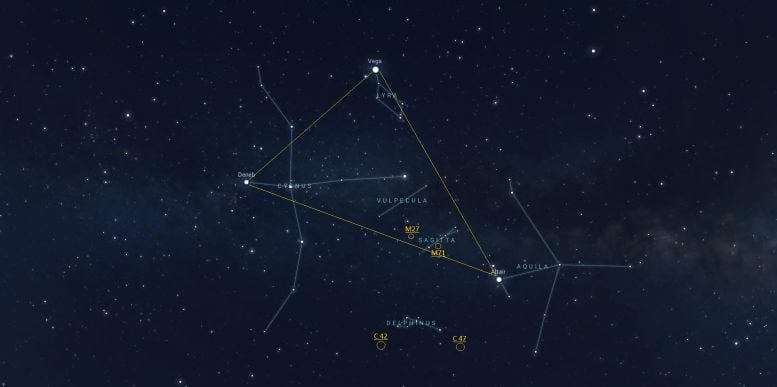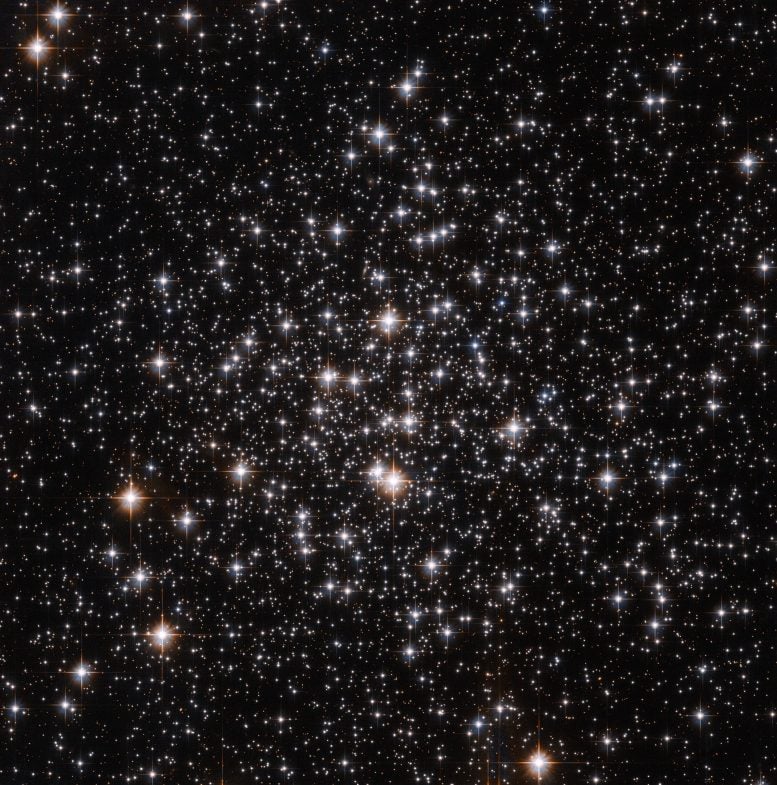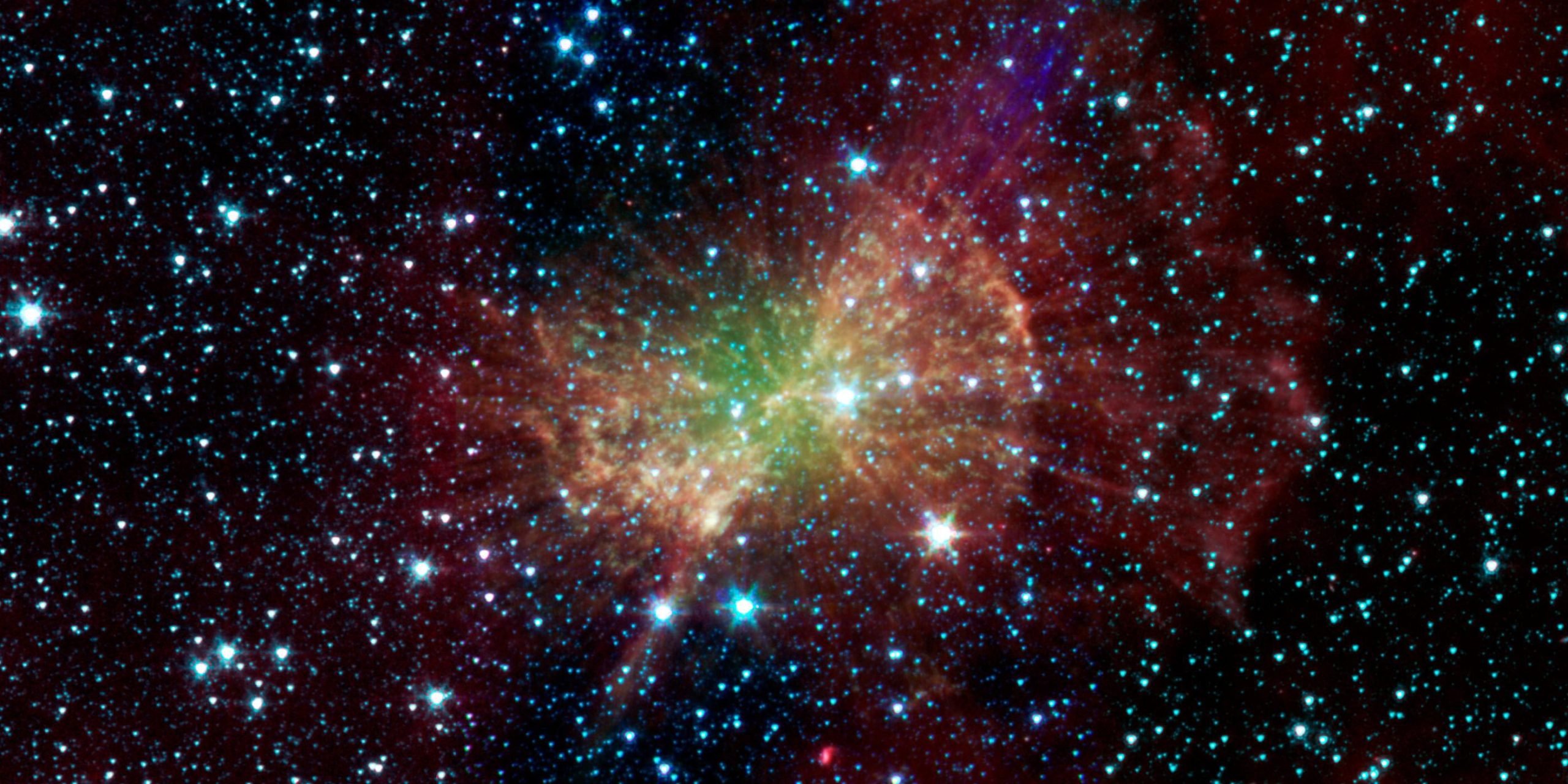During August, the Summer Triangle asterism becomes a prominent feature in the Northern Hemisphere’s night sky.
Observers can enhance their experience by using a blanket or a chair to comfortably spot constellations like Lyra, Cygnus, and Aquila, along with hidden ones such as Vulpecula, Sagitta, and Delphinus. Notably, Vulpecula houses the large Dumbbell Nebula, Sagitta contains a unique globular cluster, and Delphinus marks the approach of faint water constellations.
Exploring the Summer Triangle
August skies bring the lovely Summer Triangle asterism into prime position after nightfall for observers in the Northern Hemisphere. Its position high in the sky may make it difficult for some to observe its member stars comfortably, since looking straight up while standing can be hard on one’s neck!
While that isn’t much of a problem for those that just want to quickly spot its brightest stars and member constellations, this difficulty can prevent folks from seeing some of the lesser-known and dimmer star patterns scattered around its informal borders.
The solution? Lie down on the ground with a comfortable blanket or mat or grab a lawn or gravity chair and sit luxuriously while facing up. You’ll quickly spot the major constellations about the Summer Triangle’s three corner stars: Lyra with bright star Vega, Cygnus with brilliant star Deneb, and Aquila with its blazing star, Altair.
As you get comfortable and your eyes adjust, you’ll soon find yourself able to spot a few constellations hidden in plain sight in the region around the Summer Triangle: Vulpecula the Fox, Sagitta the Arrow, and Delphinus the Dolphin! You could call these the Summer Triangle’s “hidden treasures” – and they are hidden in plain sight for those who know where to look!

Hidden Treasures of the Night Sky
Vulpecula the Fox is located near the middle of the Summer Triangle, and is relatively small, like its namesake. Despite its size, it features the largest planetary nebula in our skies: M27, aka the Dumbbell Nebula! It’s visible in binoculars as a fuzzy “star” and when seen through telescopes, its distinctive shape can be observed more readily – especially with larger telescopes.
Planetary nebulae, named such because their round fuzzy appearances were initially thought to resemble the disc of a planet by early telescopic observers, form when stars similar to our Sun begin to die. The star will expand into a massive red giant, and its gases drift off into space, forming a nebula. Eventually, the star collapses into a Sagitta the Arrow is even smaller than Vulpecula – it’s the third smallest constellation in the sky! Located between the stars of Vulpecula and Aquila the Eagle, Sagitta’s stars resemble its namesake arrow. It too contains an interesting deep-sky object: M71, an unusually small and young globular cluster whose lack of a strong central core has long confused and intrigued astronomers. Your own views very likely won’t be as sharp or close as this. However, this photo does show the cluster’s lack of a bright, concentrated core, which led astronomers until fairly recently to classify this unusual cluster as an “open cluster” rather than as a “globular cluster.” Studies in the 1970s proved it to be a globular cluster after all – though an unusually young and small one! It’s visible in binoculars, and a larger telescope will enable you to separate its stars a bit more easily than most globulars; you’ll certainly see why it was thought to be an open cluster! Delicate Delphinus the Dolphin appears to dive in and out of the Caldwell 42 and Caldwell 47. Want to hunt for more treasures? You’ll need a treasure map, and the Night Sky Network’s “Trip Around the Triangle” handout is the perfect guide for your quest!
The Mysteries of Sagitta the Arrow
Delightful Delphinus and Stargazing Tips




















Discussion about this post